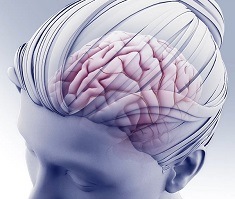
A new American Heart Association (AHA) scientific statement has highlighted the need for more data about sex differences in the use of and response to mechanical thrombectomy for acute ischaemic stroke, and suggests the need for a clear differentiation between sex and gender in future research.
The new scientific statement, entitled “Toward a better understanding of sex- and gender-related differences in endovascular stroke treatment”, was published today in the journal Stroke. This follows a 2019 update to the AHA stroke treatment guidelines that recommended mechanical clot removal—also known as endovascular therapy (EVT)—for select stroke patients to improve the likelihood of functional recovery.
However, because EVT was only recently established as a standard of care for ischaemic stroke, there are limited data about the physiological differences in treatment and outcomes between men and women, the AHA statement details. It provides a list of suggestions to assess sex- and gender-related differences in EVT research, and a guide for clinicians to improve care for people who have undergone EVT by addressing sex- and gender-specific factors.
The statement clarifies that sex refers to biological factors, is categorised as male or female, and is static (i.e. does not change over a person’s lifetime), while gender is defined in terms of individual social roles, behaviours and expressions. Gender identity differs from sex in that it is neither binary nor static; it exists along a continuum and may change over time, and—due to limitations of data available—the statement addresses only binary gender.
The statement refers mostly to sex differences on the basis of the data that were captured in most EVT studies, and the use of ‘male and female’ or ‘men and women’ refers to sex—with the acknowledgement, however, that some of the addressed sex differences may truly be related to gender rather than sex.
Currently, the majority of acute stroke research uses the terms sex and gender interchangeably. The statement suggests that studies examining biological and hormonal factors related to stroke should consider analysis by sex, while research assessing the impact of stroke on quality of life and other social factors may find analysis by gender to be more relevant.
There is currently a large overlap between sex and gender in this population, the statement says. However, while the number of transgender individuals in the USA is estimated to be rather low (0.3–0.8%), self-identified gender diversity in people with stroke is expected to increase in the future. Age at EVT treatment also varies. While stroke incidence increases with age, women tend to be 4–5 years older than men when a stroke occurs (average age at first stroke is about 68 years in men and 72 years in women), which is linked to poorer outcomes.
Moving forward, researchers need to be aware of the profound impact of sex on stroke incidence, treatment and prognosis, such as noting sex-related differences in research data, the AHA statement notes. In addition, clinicians need to understand the importance of sex- and gender-related biases in their daily practice to meet the specific needs of people who receive EVT.
The statement concludes by adding that the American Academy of Neurology (AAN) affirms the value of this statement as an educational tool for neurologists, and the statement is endorsed by the American Association of Neurological Surgeons (AANS) and Congress of Neurological Surgeons (CNS) too.













